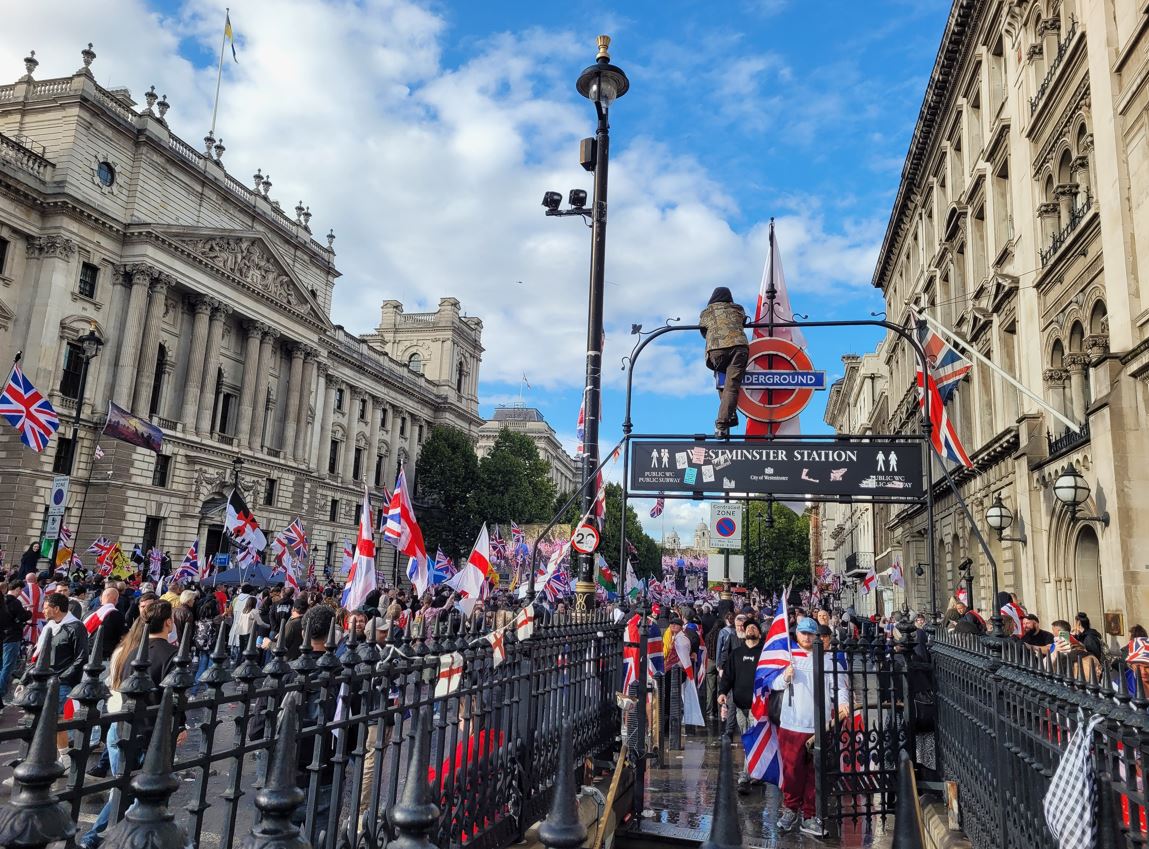On Saturday 13 September, London’s streets revealed more than political theatre; they exposed the deep fractures running through Britain’s democracy.
On one side, the “Unite the Kingdom” protests, Union Jacks held high, demanded control over migration and the defence of national culture and identity. On the other, anti-racism marches, equally vocal, carried banners denouncing hate and affirming equality, insisting that openness and pluralism remain the only viable path forward.
At the heart of the nationalist movement stood the Union Jack. Supposedly a unifying emblem, it was no neutral backdrop but a contested symbol. To one camp, it represents heritage, cultural preservation, and sovereignty. To the other, it has come to signify exclusionary politics and the shadow of far-right sentiment. What does it mean when a nation’s flag, meant to unite, instead divides – when an emblem intended to instil a sense of belonging becomes a signal of fear?
We like to believe that politics involves the pursuit of the public good. Yet these parallel protests reveal something more unsettling: there is no settled agreement on what that “good” entails. For one group, it means national identity, cultural homogeneity, and secure borders. For the other, it embodies equality, openness, and the protection of diversity.
This is not to deny that anxieties about irregular migration are real – pressures on housing, strains on public services, questions of fairness. Governments that turn a blind eye to these concerns create a vacuum that populists are quick to occupy, cloaking themselves in the mantle of patriotic devotion. Yet, when such fears are weaponised into scapegoating and violent nationalism, liberal democracy faces an existential test. History warns us how swiftly economic insecurity and cultural anxiety can be transfigured into the politics of exclusion and oppression. The rise of the far right in Britain, echoing wider European currents, renders this threat immediate, not abstract.
Protests like those in London, and – even more recently –, those across the country, remind us that the survival of liberal democracy depends not only on institutions but also on collective imagination and shared symbols. To be sure, political symbols, as I have argued elsewhere, are never neutral. They operate as sacred expressions of solidarity, binding individuals into a whole, and as markers of differentiation, distinguishing “us” from “them.” In a plural society, such contestation is inevitable. But it is one thing to disagree over ideology; it is quite another to disagree over who constitutes the demos itself. In that moment, the very promise of shared citizenship becomes fragile, even ephemeral.
What is at stake here is whether the “public” in the very notion of the public good is conceived narrowly – as a bounded ethnic nation – or expansively – as a plural and inclusive community. The Union Jack, raised high by one camp, embodies that paradox. It can be a flag of shared belonging, the emblem of a diverse people, or a banner of division, the marker of a narrow tribe. Which vision triumphs will depend on how Britain, and liberal democracies more broadly, confront fear and inequality, reckon with diversity, and resist the seductive call of exclusion.
Put simply, protests like those in London encapsulate the recognition that democracy survives in proportion to the breadth of our imagination of the public. Narrow or expansive, exclusionary or inclusive, that choice will define the contours of our civic life. Top of Form
Dr Demetris Tillyris, Reader in the School of Business, Law and Policing.
 Expert comment
Expert comment Emma Grafton-Williams
Emma Grafton-Williams 5167
5167


